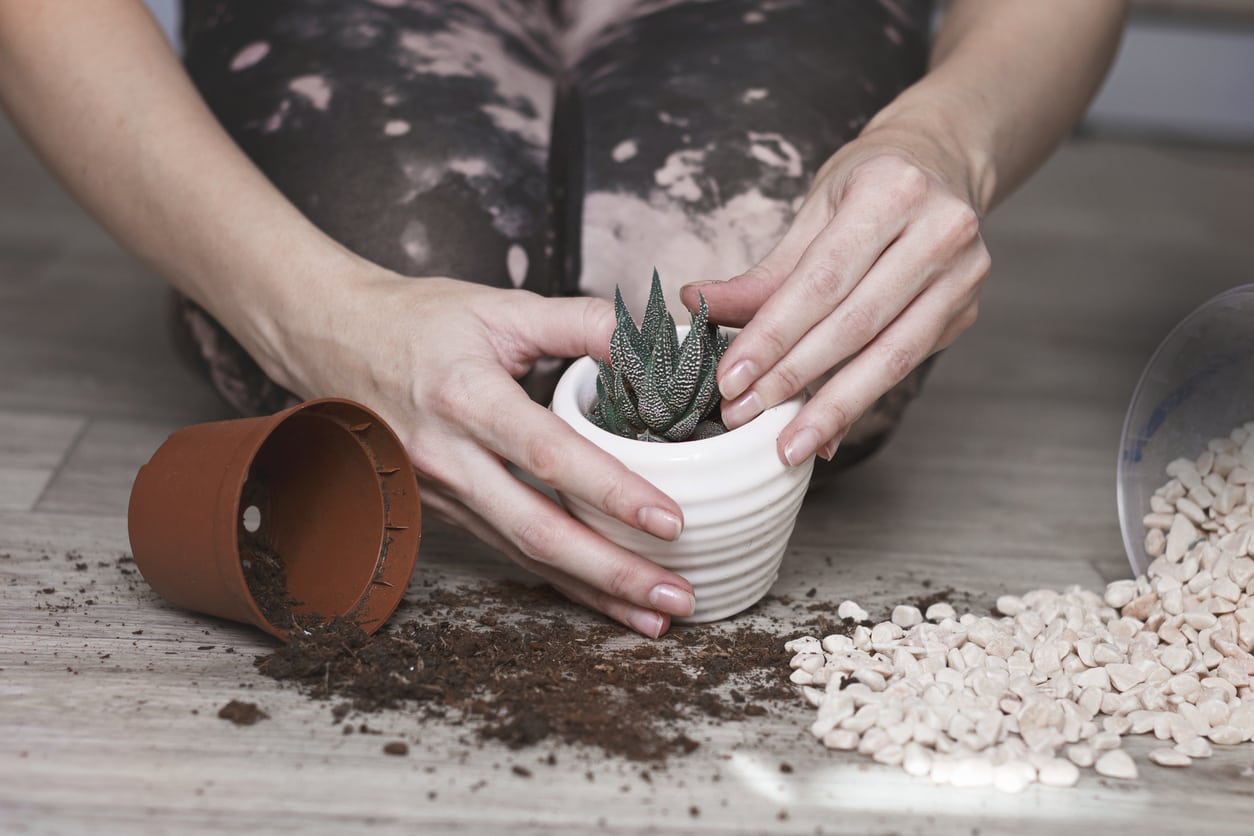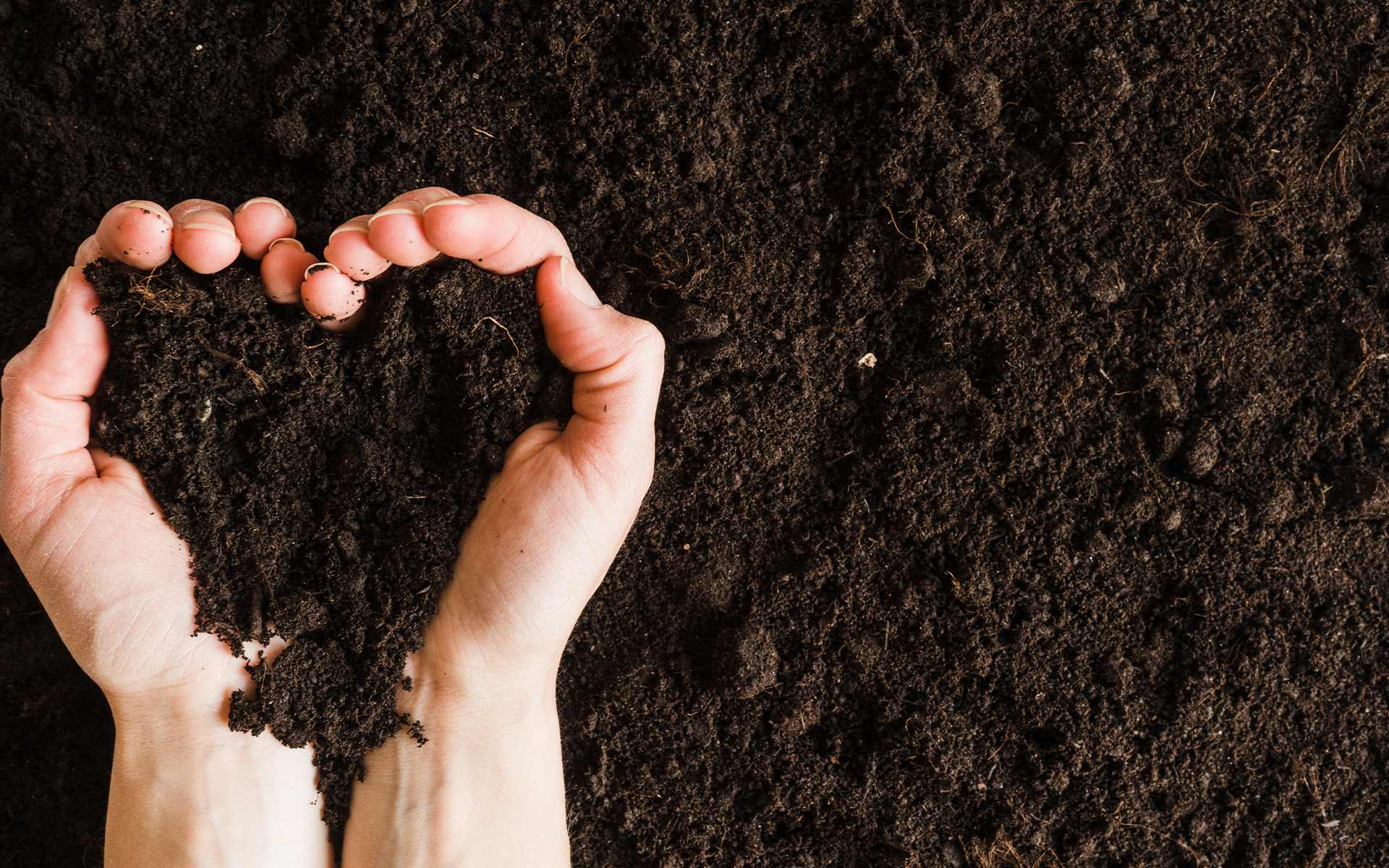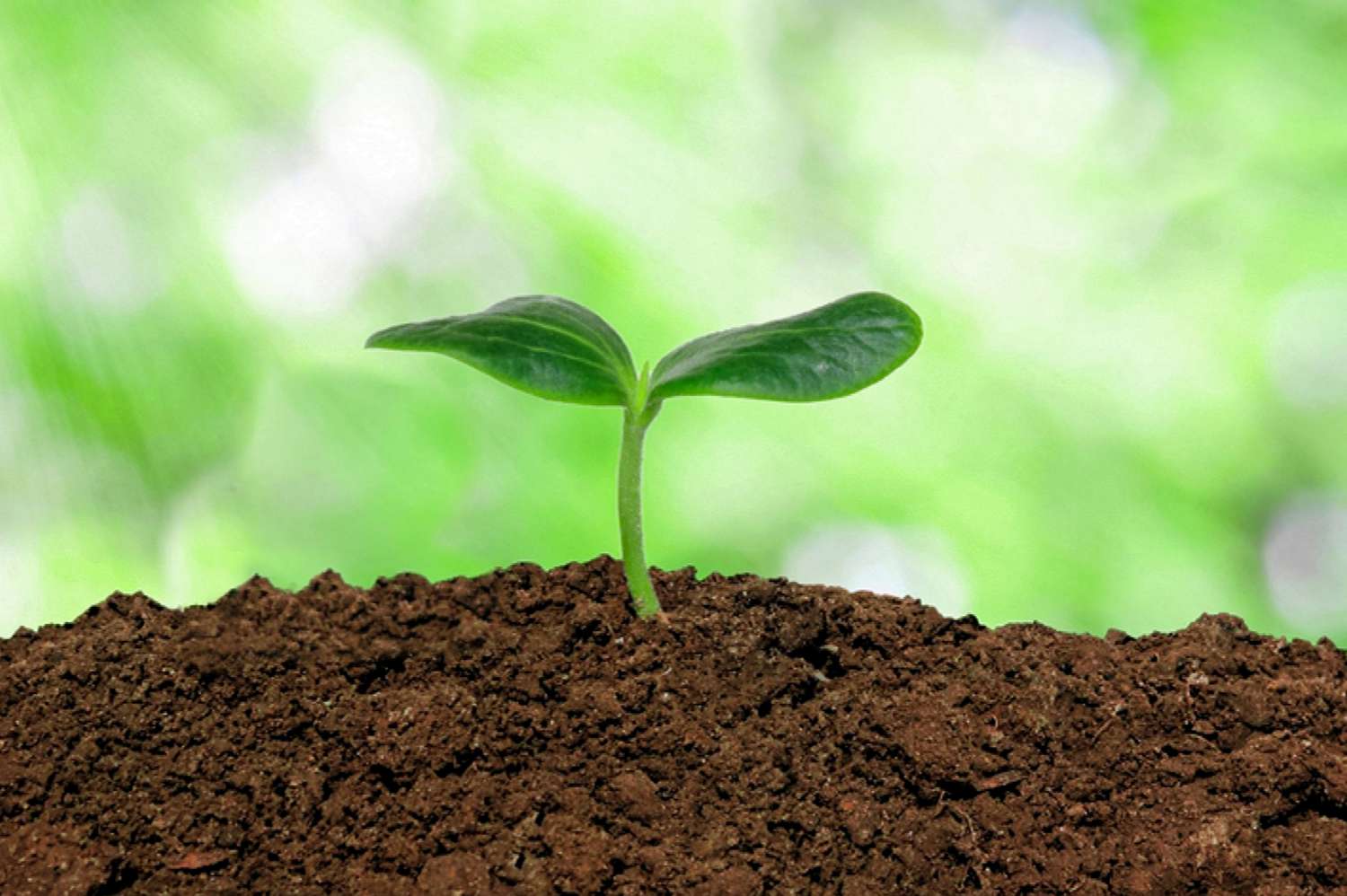Home>Gardening Basics>Understanding Soil>How To Make Loam Soil


Understanding Soil
How To Make Loam Soil
Published: February 7, 2024
Learn how to make loam soil and improve your garden with our comprehensive guide. Understanding soil types and composition is crucial for successful gardening. Find out more here!
(Many of the links in this article redirect to a specific reviewed product. Your purchase of these products through affiliate links helps to generate commission for Chicagolandgardening.com, at no extra cost. Learn more)
Table of Contents
**
Introduction
**
Welcome to the world of gardening and soil cultivation! Whether you're a novice or seasoned gardener, understanding the significance of soil composition is crucial for nurturing healthy plants. In this comprehensive guide, we'll delve into the realm of loam soil – a prized medium for fostering robust plant growth. Loam soil is revered for its remarkable capacity to retain moisture, provide essential nutrients, and promote excellent drainage, making it an ideal choice for a wide array of plants.
Loam soil is often hailed as the "holy grail" of soil types due to its balanced composition, encompassing sand, silt, and clay. Its versatility and fertility make it a prized possession for gardeners and farmers alike, serving as the cornerstone for bountiful harvests and vibrant landscapes.
Whether you're embarking on a gardening project, cultivating a vegetable patch, or nurturing a flower bed, the significance of loam soil cannot be overstated. Join us as we unravel the secrets of crafting this exceptional soil type, empowering you to elevate your gardening endeavors to new heights.
So, without further ado, let's embark on a journey to demystify the art of creating loam soil and harness the boundless potential it holds for your gardening aspirations.
**
What is Loam Soil?
**
Loam soil, often revered as the "gardener's gold," is a balanced mixture of sand, silt, and clay, offering an optimal environment for plant growth. This fertile soil type boasts a harmonious blend of particle sizes, each contributing unique properties that collectively foster a thriving ecosystem for plants.
The sandy component of loam soil ensures excellent drainage, preventing waterlogging and allowing air to circulate freely around the roots. This feature is crucial for promoting healthy root development and preventing root rot, a common concern in poorly drained soils. Meanwhile, the silt content in loam soil contributes to its exceptional moisture retention capabilities, ensuring that plants have access to water even during dry spells. Additionally, the clay component lends valuable nutrients and helps the soil retain moisture without becoming waterlogged, striking a perfect balance for plant growth.
Loam soil is renowned for its versatility, accommodating a wide range of plants and crops. Whether you're cultivating vibrant flowers, nurturing a bountiful vegetable patch, or tending to fruit-bearing trees, loam soil provides an ideal foundation for robust and healthy growth. Its ability to hold moisture, facilitate nutrient uptake, and support strong root systems makes it a preferred choice for gardeners and farmers seeking to optimize their yields and cultivate thriving landscapes.
Furthermore, the balanced composition of loam soil minimizes the need for frequent amendments and adjustments, offering a stable and fertile environment for plants to flourish. Its adaptability and fertility make it a prized asset for gardeners, serving as a cornerstone for successful cultivation endeavors.
Now that we've unraveled the essence of loam soil, let's explore the myriad benefits it offers and the remarkable impact it can have on your gardening pursuits.
**
Benefits of Loam Soil
**
Loam soil stands as a paragon of fertility and adaptability, offering an array of benefits that elevate it to the pinnacle of soil types for gardening and agriculture. Its balanced composition of sand, silt, and clay engenders a host of advantages that foster optimal conditions for plant growth and overall soil health.
One of the foremost benefits of loam soil is its exceptional moisture retention capabilities, ensuring that plants have access to water even during dry periods. This feature is particularly advantageous for regions prone to drought, providing a buffer against moisture stress and enabling plants to thrive in challenging conditions.
Furthermore, loam soil promotes excellent drainage, preventing waterlogging and allowing excess water to percolate through the soil. This attribute is vital for averting root rot and other water-related issues, safeguarding the health and vitality of plants.
Another notable advantage of loam soil is its fertility, stemming from the balanced presence of sand, silt, and clay. This fertile composition provides a rich reservoir of nutrients for plants, supporting robust growth and bountiful yields. Additionally, the optimal particle size distribution in loam soil facilitates aeration and root development, empowering plants to establish strong and healthy root systems.
Moreover, loam soil minimizes the need for frequent amendments and adjustments, offering a stable and fertile environment for plants to flourish. Its adaptability and fertility make it a prized asset for gardeners, serving as a cornerstone for successful cultivation endeavors.
Whether you’re cultivating ornamental plants, nurturing a vegetable garden, or tending to fruit-bearing trees, loam soil accommodates a diverse array of plants, making it an ideal choice for a wide range of gardening endeavors. Its capacity to support various plant species underscores its versatility and underscores its status as the "gardener's gold."
As we’ve explored the myriad benefits of loam soil, let’s now delve into the essential ingredients required to craft this exceptional soil type.
**
Ingredients for Making Loam Soil
**
Creating loam soil involves blending specific ingredients to achieve the optimal balance of sand, silt, and clay. Each component plays a crucial role in shaping the soil’s properties and fertility, laying the groundwork for a thriving ecosystem for plants.
The first essential ingredient for making loam soil is sand. Opt for coarse sand with granules that are larger than silt particles to facilitate adequate drainage and prevent compaction. The inclusion of sand in the soil mixture enhances aeration and promotes a loose, well-draining structure, mitigating the risk of waterlogging and fostering healthy root development.
Silt constitutes the second vital ingredient in crafting loam soil. Silt particles are smaller than sand and larger than clay, imparting valuable moisture retention properties to the soil. The presence of silt ensures that the soil can retain sufficient moisture for plant uptake while preventing excessive water loss, thereby supporting plants during dry periods.
Lastly, clay serves as the cornerstone of loam soil, contributing to its fertility and nutrient-holding capacity. The inclusion of clay in the soil mixture enhances its ability to retain moisture without becoming waterlogged, ensuring that plants have access to a steady supply of water and essential nutrients. Moreover, clay provides a reservoir of nutrients for plants, fostering robust growth and overall vitality.
By combining these three ingredients in the appropriate proportions, gardeners can create loam soil that embodies the optimal balance of sand, silt, and clay. This harmonious blend sets the stage for a fertile and versatile medium that supports a diverse array of plants and crops, making it an invaluable asset for gardening and agricultural pursuits.
Now that we’ve explored the fundamental ingredients for crafting loam soil, let’s proceed to unravel the step-by-step process of making this exceptional soil type.
**
Steps to Make Loam Soil
**
Creating loam soil involves a meticulous process of blending the essential ingredients – sand, silt, and clay – to achieve the optimal composition for plant growth and soil fertility. By following these step-by-step guidelines, you can craft loam soil that serves as a fertile foundation for your gardening endeavors.
- Assess the Existing Soil: Before embarking on the soil blending process, assess the composition of your existing soil to determine its predominant characteristics. This evaluation will guide the adjustments required to achieve the desired loam soil composition.
- Calculate the Proportions: Determine the ideal proportions of sand, silt, and clay needed to create loam soil. A balanced loam soil typically consists of approximately 40% sand, 40% silt, and 20% clay, although these ratios can be adjusted based on the specific needs of your plants and the existing soil composition.
- Prepare the Ingredients: Source high-quality sand, silt, and clay for blending. Ensure that the sand is coarse and free from impurities, the silt is finely textured, and the clay is rich in nutrients and organic matter. Thoroughly screen the materials to remove any debris or unwanted particles.
- Blend the Components: Combine the sand, silt, and clay in the predetermined proportions, and thoroughly mix them to achieve a uniform consistency. Utilize a tarp or mixing equipment to ensure thorough incorporation of the components, creating a homogeneous soil mixture.
- Test the Soil: After blending the components, conduct a soil test to assess the texture, drainage, and nutrient-holding capacity of the newly created loam soil. This evaluation will provide insights into any adjustments or amendments required to optimize the soil for plant growth.
- Amend as Needed: Based on the results of the soil test, make necessary amendments to fine-tune the loam soil composition. Additional organic matter, such as compost or well-rotted manure, can be incorporated to enhance the soil’s fertility and structure, further enriching its capacity to support plant growth.
By diligently following these steps, you can craft loam soil that embodies the optimal balance of sand, silt, and clay, providing a fertile and versatile medium for nurturing a diverse array of plants and crops. Now that we’ve unraveled the process of making loam soil, let’s reflect on the significance of this exceptional soil type in the realm of gardening and agriculture.
**
Conclusion
**
As we conclude our exploration of loam soil, we’ve embarked on a journey through the fundamental aspects of this exceptional soil type – from unraveling its composition and benefits to delving into the ingredients and steps for crafting it. Loam soil stands as a testament to nature’s ingenuity, offering a harmonious blend of sand, silt, and clay that nurtures thriving ecosystems and supports the growth of diverse plant species.
The significance of loam soil in gardening and agriculture cannot be overstated. Its balanced composition engenders exceptional moisture retention, optimal drainage, and fertility, providing an ideal environment for plants to flourish. Whether you’re cultivating ornamental flowers, nurturing a vegetable garden, or tending to fruit-bearing trees, loam soil serves as a versatile and fertile medium that accommodates a myriad of plant species, empowering gardeners and farmers to optimize their yields and cultivate vibrant landscapes.
By understanding the essential ingredients and steps for creating loam soil, individuals can harness the potential of this exceptional soil type to elevate their gardening endeavors. The meticulous blending of sand, silt, and clay culminates in the formation of loam soil, a prized asset that embodies the optimal balance for plant growth and overall soil health.
As you embark on your gardening pursuits, consider the transformative impact that loam soil can have on the vitality and resilience of your plants. Embrace the art of crafting loam soil and witness the bountiful rewards it yields, nurturing lush gardens and thriving harvests.
In essence, loam soil epitomizes nature’s gift to gardeners and cultivators, offering a fertile canvas upon which to sow the seeds of abundance and vitality. Embrace the art of crafting loam soil, and let its boundless potential enrich your gardening journey, fostering a legacy of flourishing landscapes and verdant abundance.



